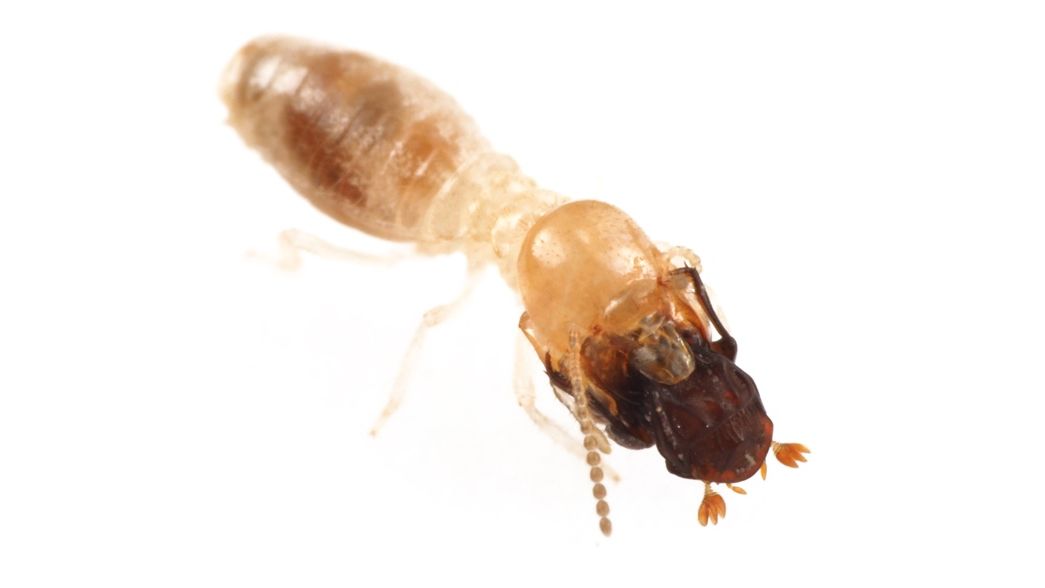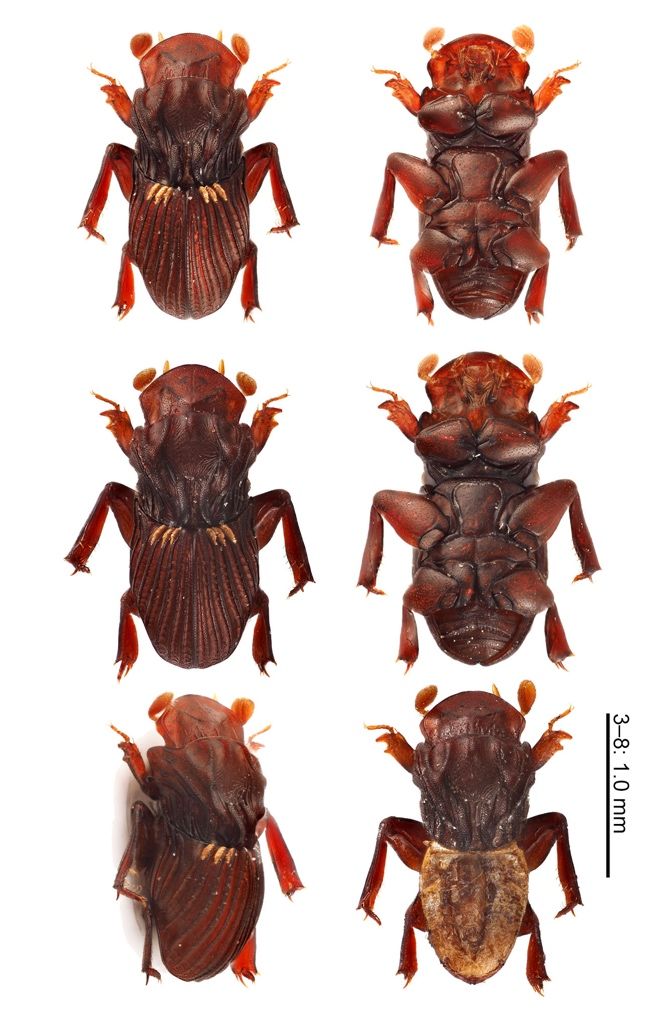研究成果 Research Results
- TOP
- News
- Research Results
- Newly discovered beetles get a lift from termites
Newly discovered beetles get a lift from termites
Scarab beetles found in Myanmar first of the Termitotrox genus reported to be carried by host termites 2020.10.14Research ResultsLife & HealthEnvironment & Sustainability
Aside from just termites, countless other insects live symbiotically inside of many termite nests. A research team including members from Kyushu University has now discovered a new species of scarab beetles in Myanmar that not only live with termites but also get carried around by them.
Named Termitotrox icarus after the Icarus of Greek mythology because wing-shaped outgrowths—called trichomes—on its wing cases are smaller than those of other known species of the genus, the new beetle species likely tricks termites into thinking they are termite eggs or larvae to get carried in a similar manner.
This is the first discovery of such carrying behavior for the genus Termitotrox, with few other cases ever reported.
“The extraordinary sight of this beetle being carried by termites made it immediately jump out at me despite being only two millimeters in length,” says Showtaro Kakizoe, researcher at The Kyushu University Museum and first author on the paper reporting the new species.
Kakizoe, visiting researcher Wei-Ren Liang, and Associate Professor Munetoshi Maruyama, all affiliated with The Kyushu University Museum, and Dr. Khin Mar Myint of Myanmar’s Forest Research Institute led the joint research project with the National Museum of Nature and Science, Tokyo, that resulted in the discovery.
Research regarding termitophilous insects—those that have a relationship with termites—has remained largely unexplored because of the complex nature of termite nests.
Flightless due to the degeneration of its hind wings, the new beetle species can walk using its short legs. However, being carried by host termites likely provides a faster route to traverse the termite nest and reach the fungus garden, which aids in food production from indigestible materials.
The researchers hypothesize that, after the host termite colony collapses, the beetles may disperse by crawling to a nearby colony, where a termite may pick them up and rapidly transported them to the fungus garden.
“There is a whole world inside of termite nests that is still unknown to us,” says Kakizoe. “I hope to continue our research to further reveal the fascinating world of insects.”
###
For more information about this research, see “Termitotrox icarus sp. nov. (Coleoptera: Scarabaeidae): A new termitophilous beetle from Myanmar with observations of carrying behavior by host termites,” Showtaro Kakizoe, Wei-Ren Liang, Khin Mar Myint, and Munetoshi Maruyama,Acta Entomologica Musei Nationalis Prague, 60(2): 427–436 (2020). https://doi.org/10.37520/aemnp.2020.27
This study was supported by JSPS Grants-in-Aid for Scientific Research (KAKENHI) 19H03285 and JSPS Fellow 17J07016 from the Japan Society for the Promotion of Science, Japan.
Research-related inquiries
Munetoshi Maruyama, Associate Professor
The Kyushu University Museum
Contact information can also be found in the full release.
- TOP
- News
- Research Results
- Newly discovered beetles get a lift from termites

































